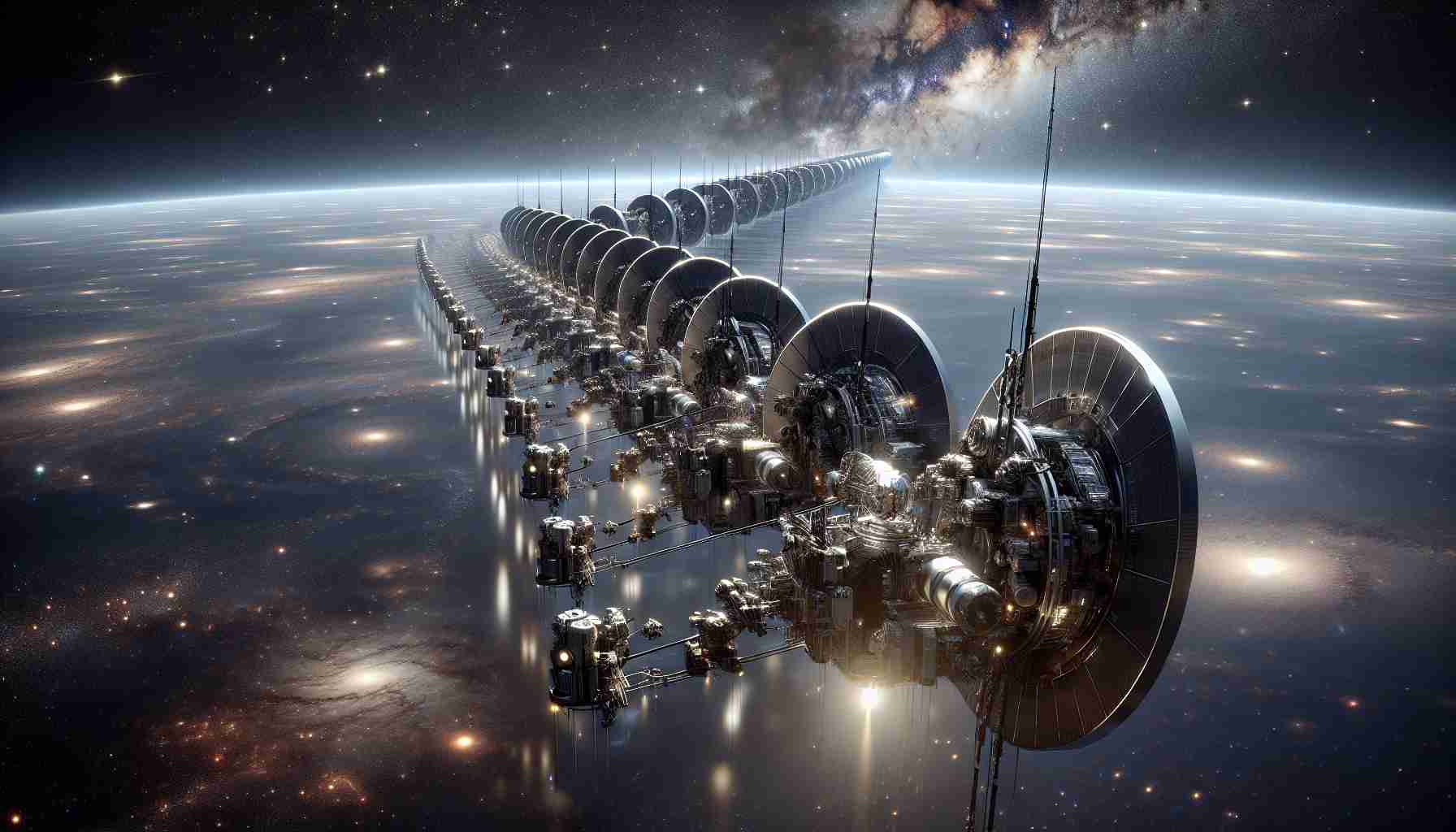
SpaceX is gearing up to roll out a new generation of Starlink satellites that will dramatically enhance internet connectivity worldwide. According to CEO Elon Musk, these satellites will be significantly larger than their predecessors, necessitating the use of the powerful Starship launch vehicle for deployment.
The shift from the Falcon rocket to Starship marks a pivotal development in SpaceX’s ambition to provide high-speed internet access. Musk emphasized that these next-generation satellites will achieve an impressive tenfold increase in bandwidth and enhance data speed by operating at a lower altitude.
Recent filings with the Federal Communications Commission (FCC) indicate SpaceX’s request for operational modifications for its satellite network. The company seeks permission to authorize more flexible frequency usage and lower orbital positions for its satellites, which is expected to bring fast, fiber-like broadband service to underserved areas globally.
This upgrade is vital for millions who lack reliable internet access, as it aims to bridge the digital divide. Senior VP of Starlink Engineering, Michael Nicolls, confirmed the upcoming launches on Starship would support gigabit internet connectivity across the globe.
Starship, standing at 121 meters and capable of a payload capacity of 150 metric tonnes, represents the most ambitious launch system developed by SpaceX yet. Following successful test flights, the world eagerly anticipates the deployment of these transformative satellites.
SpaceX’s Ambitious Starlink Project Aims to Transform Global Internet Connectivity
As SpaceX prepares for the launch of its new generation of Starlink satellites, the company aims not only to revolutionize satellite internet but also to tackle various global challenges related to connectivity. These next-generation satellites, significantly larger and more advanced than their predecessors, are set to use SpaceX’s powerful Starship rocket for deployment, marking a significant milestone in the quest for universal internet access.
What are the key advantages of the new Starlink satellites?
One of the main advantages lies in their capability to provide enhanced bandwidth. With a tenfold increase in capacity compared to earlier versions, these satellites can potentially offer gigabit speeds to a broader audience. The operation at lower altitudes minimizes latency, bringing satellite internet closer to the performance levels of traditional terrestrial broadband. This means that users in remote or underserved regions may finally have access to high-quality internet, which is essential for education, remote work, and telemedicine.
What are the key challenges associated with this new technology?
Despite the promising advancements, SpaceX faces several challenges. One major concern is the regulatory landscape. Gaining approval from various national authorities around the world can be time-consuming and complex. Another challenge includes the potential for increased space debris around Earth. As thousands of satellites are launched, the risk of collisions and the creation of space debris rises significantly, prompting discussions on sustainable practices in space operations. Furthermore, as rival companies like Amazon’s Project Kuiper and OneWeb also vie for market share, SpaceX needs to maintain its competitive edge while ensuring service reliability.
What controversies have arisen from the Starlink project?
The Starlink project has sparked debates among astronomers and environmentalists. Astronomers have raised concerns about the visibility of satellite constellations interfering with astronomical observations, arguing that these large satellite networks can obscure celestial bodies and hinder scientific research. Environmentalists express worries about the ecological impact of launching thousands of satellites, including potential harm to wildlife and ecosystems.
What are the disadvantages of relying on satellite internet?
While satellite internet offers numerous benefits, it is not without drawbacks. Latency, despite improvements, can still be higher than traditional broadband connections, particularly due to the physics of signal travel. Weather conditions can also affect service quality, leading to interruptions during heavy rainfall or storms. Additionally, the initial cost of satellite internet services and equipment can be prohibitive for some users, which may limit accessibility in lower-income regions.
Conclusion
SpaceX’s Starlink project holds significant potential to bridge the digital divide and provide internet access to millions around the globe. However, as the company embarks on this ambitious journey, it must navigate regulatory hurdles, address environmental concerns, and strive to minimize the impact of satellite launches on space debris. With ongoing developments and improvements, the future of global internet connectivity may well depend on the success of projects like Starlink.
For more information about SpaceX and its initiatives, please visit SpaceX.



